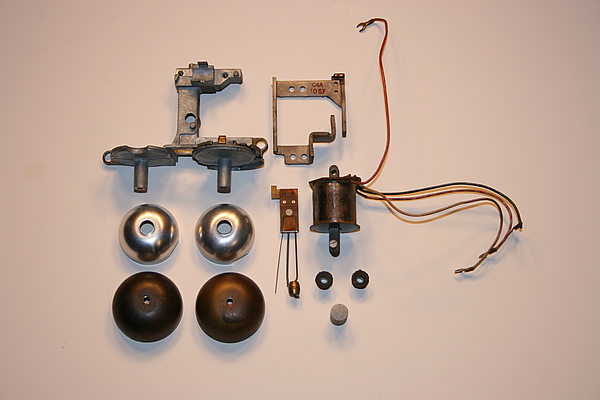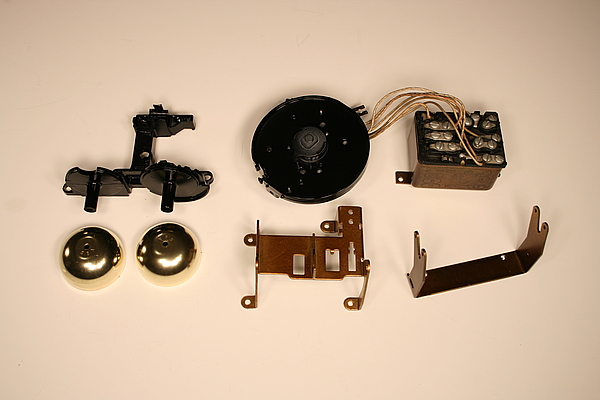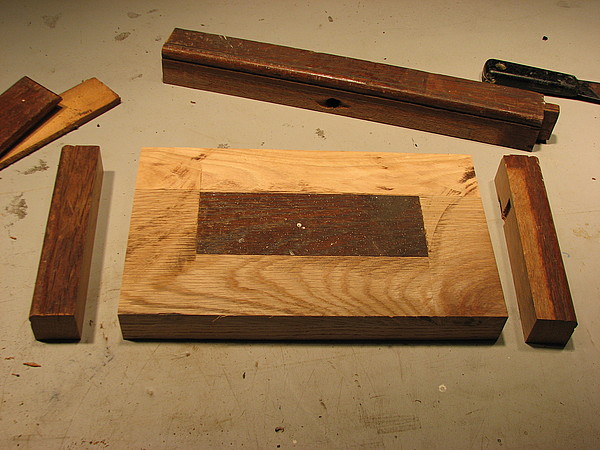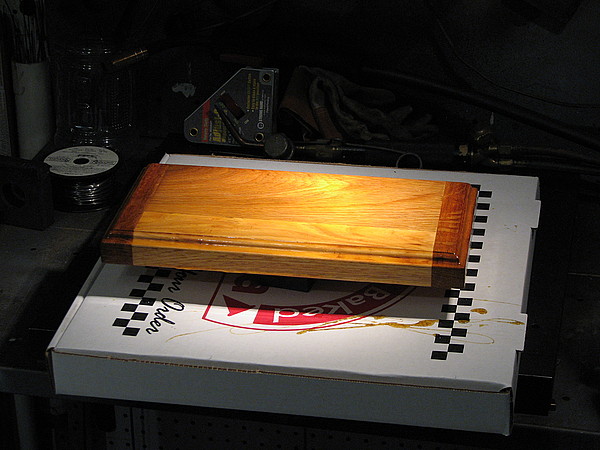Workshop Telephone
I started this project quite some time ago, in fact some of you may have seen it at Maker Faire back in May. Originally, this was intended to be an example of ‘how to steampunkify an object.’ The idea being that by removing the casing and exposing the interesting insides of the phone you can make it more exciting and attractive.
I guess it kind of worked, but to be honest I’m not that pleased with the results. In any case, it will make a fine telephone for the workshop.
. . .
Oh hey! I just came across this video from TechieDiva where Nathaniel Johnstone from Abney Park shows off my phone at Maker Faire – what’s so cool is that he gets it just right and this video was likely filmed with in hours of the time when Nathan and I first met in person!
A note of caution! If you emulate my work you will end up with a phone with exposed conductors that can give you a healthy jolt – particularly when the phone is ringing. This is not a safe device and definitely not for children or unsuspecting muggles. However, since there are a multitude of far more dangerous things in my workshop, I am not particularly concerned for this application. I’m also pretty sure that this phone violates phone company rules, but since I’ll be connecting it to a private system, this is not a concern for me.
If you fabricate something like this for your own use you should definitely cover and insulate the connections on top of the network block. Remember, always keep your own safety in mind and in particular, be aware that you are responisble for the safety of anyone using something you build.
I started with a classic Bell System wall phone. Yeah, yeah, these are indeed great old phone but they are NOT special. As long as they can be had for less then $10 on eBay I refuse to feel bad about chopping them up! I particularly like that this one was not updated and ‘modularized’ by Ma Bell in the 70’s, it still has the hard-wired cord.

Step one, strip out the goodies and be sure to make a wiring diagram! If you loose your sketch (like I did!) schematics for most common phones are available here.

I disassembled the ringer, polished the brass bells and painted it’s chassis with black lacquer.

The rotary dial was similarly disassembled and painted along with some of the supporting brackets.

I salvaged some bits of oak from the scrap bin and glued them up,

and hand planed the block.

Then I routed an ogee around the edge. This was my first use of a new router table, it’s well worth the $40 I spent on it.

Three coats of poly-urethane really brought out the beauty of the wood.

To prepare the receiver, I took the strain relief off of the original coil cord and used the old shoelace trick to cover a piece of 4 conductor cable from an old RS232 cable. I used a piece of shrink tube on the end of the shoelace and that allowed me just enough of a transition so I could slide the strain relief in place after wetting it with a little spit.

Finally, everything was mounted up to the block of wood with brass wood screws and I added some dial numbers. The dial numbers are typewriter key stickers that I picked up at Michael’s. They’re just the right size and go well with the wood but do not have the "ABC" "DEF" lettering that the original dial would have. In any case, I expect that I will mostly be answering calls with this phone rather than dialling out.

This last part of the project is actually the coolest, I think. We have a Meridian Digital phone system in our house, I picked it up when the company I work for upgraded last year. So, my Steampunk phone connects to a NorthStar ATA2 analog to digital converter which then connects to the main KSU. The main KSU trunks to the analog card in the Verizon FIOS cab on the outside of our house and then goes optical for the journey to the central office where it’s injected into the global digital network.
It was really kind of neat dialling from my iPhone through the KSU and hearing those 60 year old bells jangle!

Hey I understand the sentiment of this project. But you destroy a gorgeous old phone to make a fake old phone. Seriously disappointed with this.
If the phone really was trashed as I doubt since you used its components I would understand. Wow I would love to have the original old phone. Just a shame that you couldn’t have found a better way to do this project! Just because mindless people like you see them for $10 because they have no idea what they are selling doesn’t mean our heritage should be destroyed so mindlessly by thugs with a hammer and saw like you. Not smart at all. Very shallow of you.
Just because you have dangerous stuff like a ban-saw or table saw, with safety switched, in your workshop your happy to disregard safety for another device you admit is and actually is dangerous to small undeveloped hearts. An electrically charged device like a ringing telephone where a child might be in your workshop on some rare occasion is almost guaranteed to be attracted.
Shame on you. This is bad design and callous attitude at best.
I fear sir, that this is not the website for you.